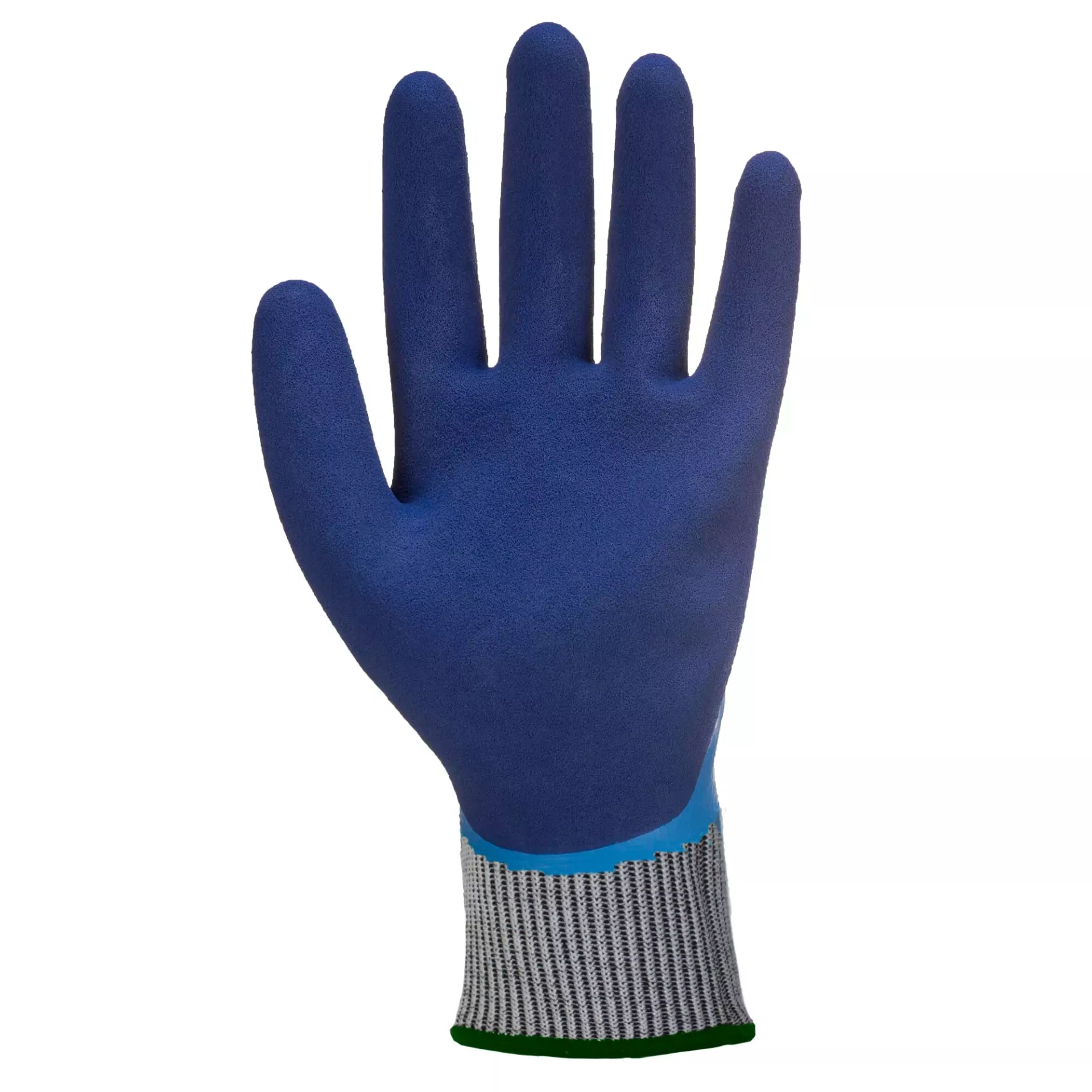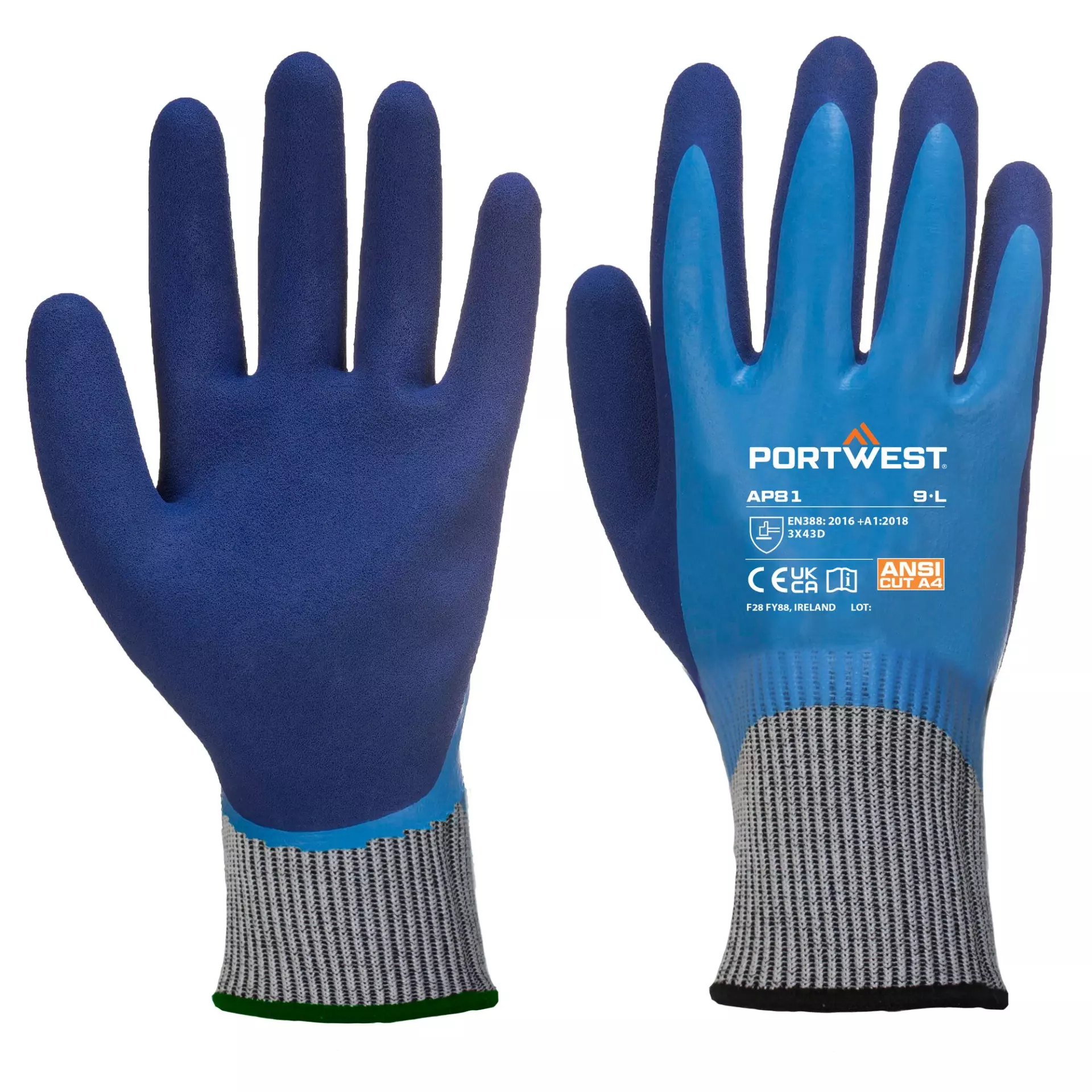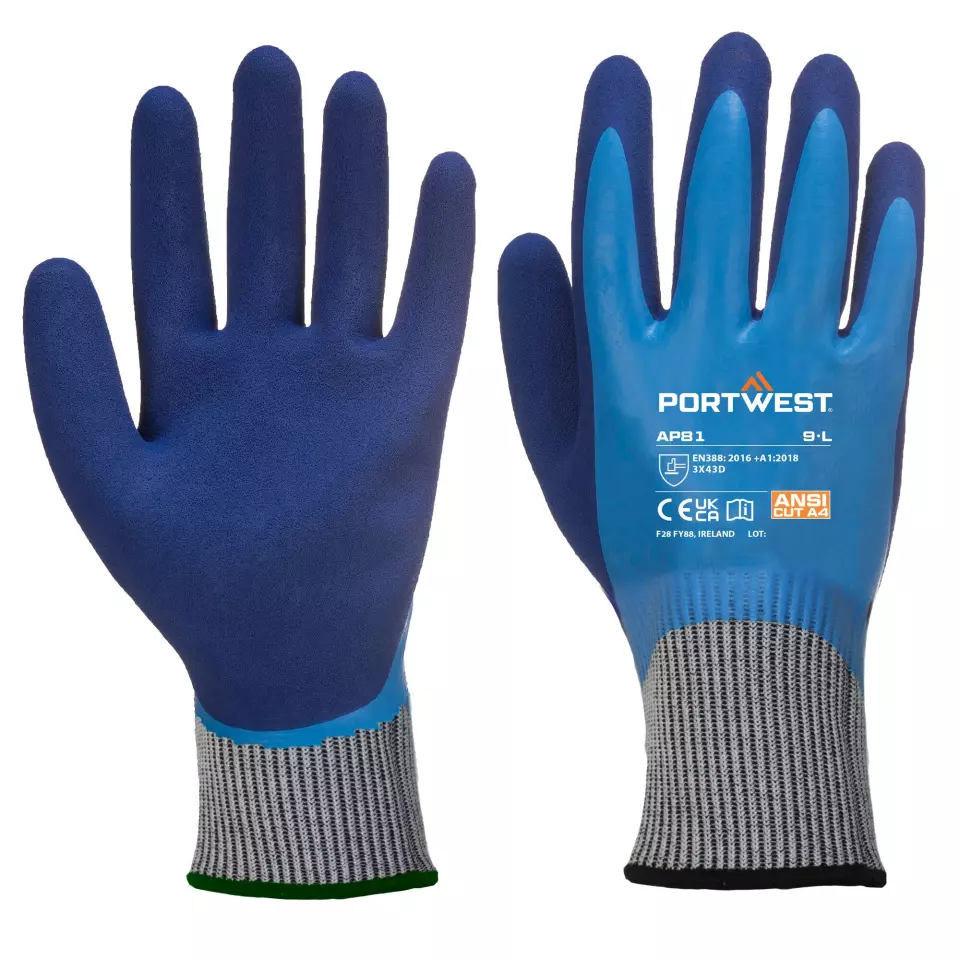

Features You'll Love

Coating Material · Latex
The substance applied to glove surfaces to enhance grip, durability, and protection, with different materials suited for various work conditions.

EN 388 · Abrasion Resistance Level 3, Tear Resistance Level 4, Puncture Resistance Level 3, Cut Resistance, ISO 13997 Level D
Provides good resistance against scraping, scratching, and rubbing on rough or abrasive surfaces.
Offers the highest level of protection against tearing, withstanding a strong force before ripping.
Withstands strong pressure from sharp objects like nails or thick splinters.
Offers strong protection against cuts from utility knives, glass edges, and sheet metal.
Portwest
Liquid Pro HR Cut Glove, Blue, 12 pairs
Liquid Pro HR Cut Glove, Blue, 12 pairs
4.4 / 5
82,98 €
Price per 12 pairs
6,92 € / pair
Choose size
Free delivery
Features You'll Love

Coating Material · Latex
The substance applied to glove surfaces to enhance grip, durability, and protection, with different materials suited for various work conditions.

EN 388 · Abrasion Resistance Level 3, Tear Resistance Level 4, Puncture Resistance Level 3, Cut Resistance, ISO 13997 Level D
Provides good resistance against scraping, scratching, and rubbing on rough or abrasive surfaces.
Offers the highest level of protection against tearing, withstanding a strong force before ripping.
Withstands strong pressure from sharp objects like nails or thick splinters.
Offers strong protection against cuts from utility knives, glass edges, and sheet metal.
Product description
Professional protective gloves featuring Level D cut resistance and maximum liquid protection through dual latex coating technology. The seamless 13-gauge liner construction provides excellent dexterity while the full hand coating creates a waterproof barrier against grease, oil, and water penetration. These gloves combine high cut protection with superior grip performance through a specialized double-dipping process.
Product Features:
- Level D cut resistance with ANSI A4 rating
- Seamless 13 gauge liner construction
- Liquid Pro technology for maximum liquid protection
- Dual latex coating with double dipping process
- Full hand coating provides waterproof barrier
Technical Details:
- Prevents grease, oil and water penetration
- Excellent dexterity for precision work
- Smooth latex fully coated with secondary latex foam palm dip
- Maximum grip through specialized coating process
- CE certified
Standards:
- EN ISO 21420: 2020 Dexterity 5
- EN 388: 2016 + A1: 2018 (3X43D)
- ANSI/ISEA 105: 2016 CUT Level (A4)
- ANSI/ISEA 105: 2016 ABRASION Level (6)